
DanL.
-
Posts
27 -
Joined
-
Last visited
Content Type
Profiles
Forums
Articles
Gallery
Downloads
Events
Posts posted by DanL.
-
-
Frosty, why not build a jib crane for the hitch receiver to do the dead lifting? Seems easier than trying to figure out the placement, only getting access to 3 sides of your anvil and vise and then being stuck working right by your truck.
-
The smaller one looks like the Saltfork Craftsmen block, which sells for $200 plus shipping. The larger seems to be be pretty good condition, hard to tell from the 1 picture, but I'd say you did pretty good on that one.
-
I say take the classes before you buy anything big. Learn what you really need and don't need. And definitely stop in PA!
-
Requisite post on maybe you should wait until you have some experience before spending that much on an anvil. You can make a very good improvised anvil a lot less. Check out this post: https://www.iforgeiron.com/topic/52308-a-collection-of-improvised-anvils/
Spend your money on some classes, books and other tools you'll need.
-
Sorry, didn't even know this section existed buried way down here. When I did a search all I got was other posts with the word book and not this sub-sub-sub topic. My hope was to have people start a discussion on some of the books they have found most useful and learn a bit more. Not everything need to be a question with a specific answer, so I don't have anything to ask.
-
Most recently I got Practical Blacksmithing: The Four Classic Volumes in One by M. T. Richardson ISBN-13 978-0785835394, ISBN-10: 0785835393 and I'm a 150 pages in. So far it's interesting, but a lot of it would be useful opening a shop 100+ years ago.
I just ordered Samuel Yellin: Metalworker by Jack Andrews ISBN-13 978-1879535053, ISBN-10: 187953505X and looking forward to that one.
-
What books do you have that are indispensable? Be it Instructional or inspirational, modern or traditional, for beginner or advanced.
I've seen a few mentioned in threads here or there, but looking to find new titles that may not come up without knowing what you are looking for.
-
Hey, I've been meaning to get the pics and post them for you. I take classes and rent space at Pratt Fine Arts Center in Seattle, WA and haven't gone since you asked. These are some pics of their larger forge with a vertical sliding door. Please excuse the quality, its back lit and the forge was on, so I couldn't always get the shots I wanted.
The door is cast refractory and has seen better days. Lot's of students knocking work against it while hot and a fair share of novice forge welding with way too much flux have passed through this door.
I will be there again next weekend if you want close ups of any other parts of it. Its a simple lever with a weight on it so balance the door a but, with a couple of pulleys and a wire. Door is in a simple track made of angle iron, C channel and some flat stock. I can't tell you how they case the door, it was done quite a few years ago and I haven't really looked that closely.
-
I'm not sure 1 tool will do it. A decent bench top belt grinder would do a lot. If you are building your own, make sure you have good access so you can in and do slack belt grinding, great for smoothing out and feathering on the convex sides. A die grinder with a bunch of dies will help with some of the concave shapes.
-
Passing was a good idea, the guy relisted it at $225. Much nicer deal at $3 per lb, perhaps still not worth it with a crack or delamination.
-
What was the verdict with the PW?
-
NWBA swap meet is Oct 28th, so maybe hold out for that. I haven't looked for a local place that sells them retail, but have been watching CL for a while to see what's out there.
Some of the online retailers have free shipping on some of the anvils in this size range. It's no a PW, but it will be chip free and flat face.
-
Anvils around Seattle have been creeping up in price and I frequently see listings for $5-$7 per pound. No clue what they end up selling for. If this is the one currently posted in Snohomish, the edges look a little rough to be paying top dollar. Even at $350 you can get new anvil for a few bucks more in that size range.
-
Planning to try some other shapes, both cut and forged in with a mild steel Damascus billet to same some money and time working and grinding it.
I'll post pics when. I get a few done.
-
Hah, yeah. For some reason she doesn't want a spring fuller or more hooks.
-
I did a lot of grinding to get the thickness down and took a bit of the sides and bottom. She likes big dangling earrings, so wanted to keep them as big as I could. It's a learning process, so next time will try to forge them thinner to start.
-
-
Since Page76 is new, NJAM is @njanvilman and to call him a Fisher and expert is probably and understatement.
-
9 minutes ago, jlpservicesinc said:
I was curious as I have for years worked on cars and trucks.. I have seen where oil and sand have eaten helped to eat away steel as oils can be hydroscopic and the water gets in behind and can't go anywhere..
I can see you are in Seattle so moister I imagine can be a problem.. I have no good answer to the problem of moisture inside tubes other than to paint inside them or use a cold galvanizing zinc or a waxoyl, or Fluid film type product..
Have you thought about opening a notch in 2 corners and opening up.. Having it to small can be a real problem when going to use it.. I found this to be the case on the stand I had shown..
I'll get back to you in 20 or 40 years on the moisture in the tube. I am hoping this will work well enough. I wasn't sure I would be able.to effectively paint the inside with the equipment I have and thought bouncing sand would wear that away.
The legs are pretty securely welded to the top frame at this point, it's tight along the sides and not the corners, so if it try anything to open it up I'm afraid of making it less rigid or severely compromising the strength. I may add some additional bracing on the outside so I can grind the inside just a bit. I'll see how well it works once the rails in in place vertically along the slot.
-
14 minutes ago, jlpservicesinc said:
Looks good.. I am curious about the sand and oil in the legs?
Thanks, definitely a few things I would do differently next time. The top frame is about 1/16 too small, I lost a little more than expected grinding the ends of the angle and I think 1 corner is off by a hair, so the block just barely fits and needs a little convincing to go into the slot.
The sand and oil mix is from a few other threads and suggestions I've seen to help dampen noise and vibration and stop rust on the inside of the legs.
-
A couple of shots of my still in progress stand with a swivel jib crane. So far in just testing it out the swivel has been handy to help get the block up on the stand and maneuver it into and out of the slot on to the edges of the frame. I've added a winch already which makes it much easier. The jib arm is a total of 5ft tall and I would go at least 2 inches higher, I didn't account for the flex in the metal and the shackle that the pulley hangs from.
The crane was made from 1.5" OD x 0.12" wall tube and the sleeve was 1.75" OD x 0.095" wall tube, it just about fits perfectly. The arm coming off was made from the 1" sq tubing that I had lying around.
The frame itself is build from 2" sq tube and 2" angle, both 1/4" thick. Legs are filled with sand and oil. I still have to fit and weld more angle along the sides of the slit for the block to keep it straight and secure when working on the sides.
-
Just now, ede said:
JLP suggested them, I figured why not, can't hurt might help. I think it has made it more rigid.
I was considering tubing but decided on 1/4 angle since I could weld it in different planes, on the top, sides, and underneath. I'm sure tubing would have been fine too. You can fill the legs at least that way.
I can see the gussets adding strength and preventing sagging on the top angle frame. I'll probably add them as well then, I would rather not have it collapse or bend under use.
-
5 minutes ago, ede said:
This is where mine is at. I have the winch, just need to fab the rest:
Looks a lot like mine. I went with square tubing for the legs rather than angle so the top angle frame sits on the end up the tube. I figured it would be more secure than just relying on the weld to hold up against sledging on the block. I like a gusset plates for stability, and wasn't sure if they would be required. Did you find they added some stability or just being cautious?
-
5 minutes ago, ede said:
I look forward to seeing yours DanL. Interesting choice on the round tube. I wonder if a thrust bearing would help with the pivoting if you placed one underneath your tube.
I wanted to be able to pivot the block, so I figured I would give it a try, if it doesn't work out well I'll just weld it in place. Also, hoping a thrust bearing won't be necessary, since most of the time I don't expect to do anything other than lifting straight up, time will tell, and that's and easy addition since I left a bit of space on the bottom end of the support tube and plan to extend the plate I am using as the foot out under the tube.
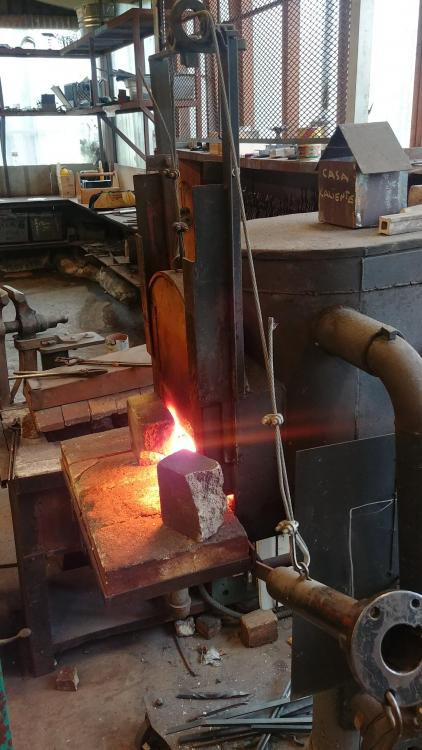
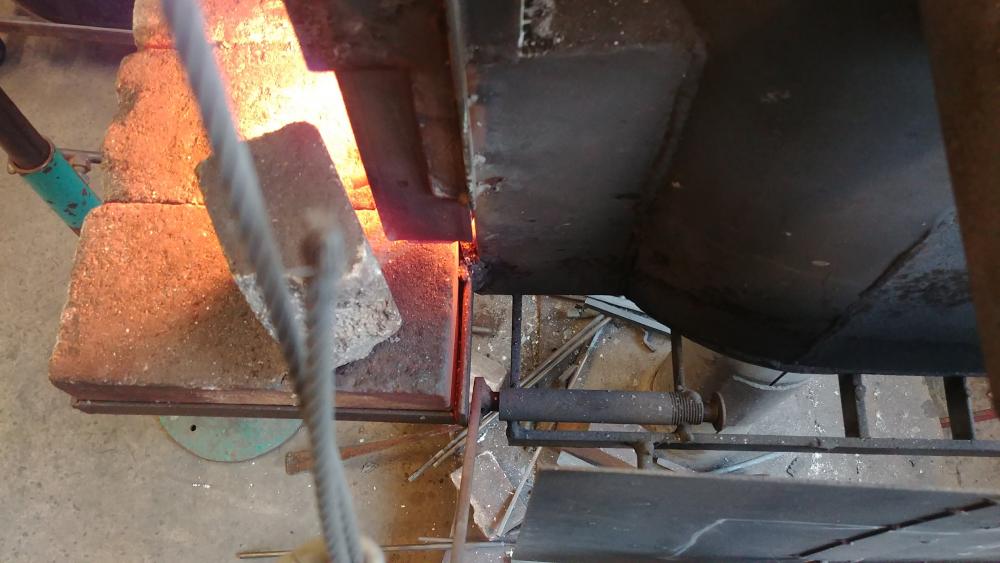
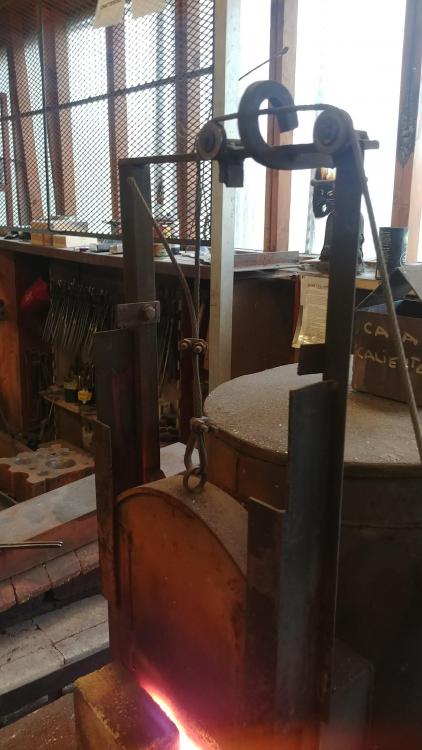
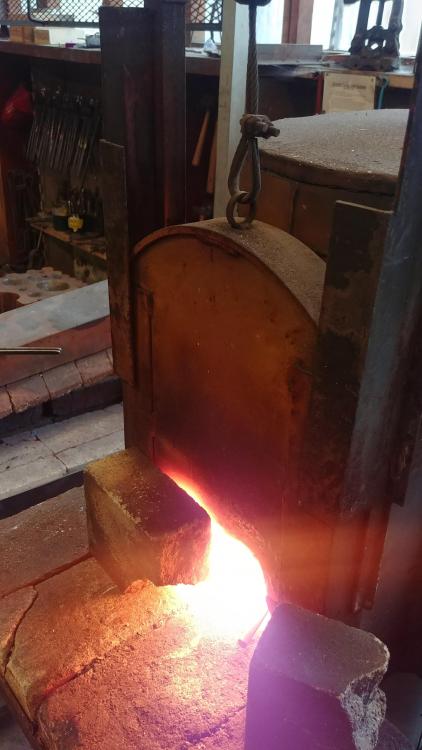
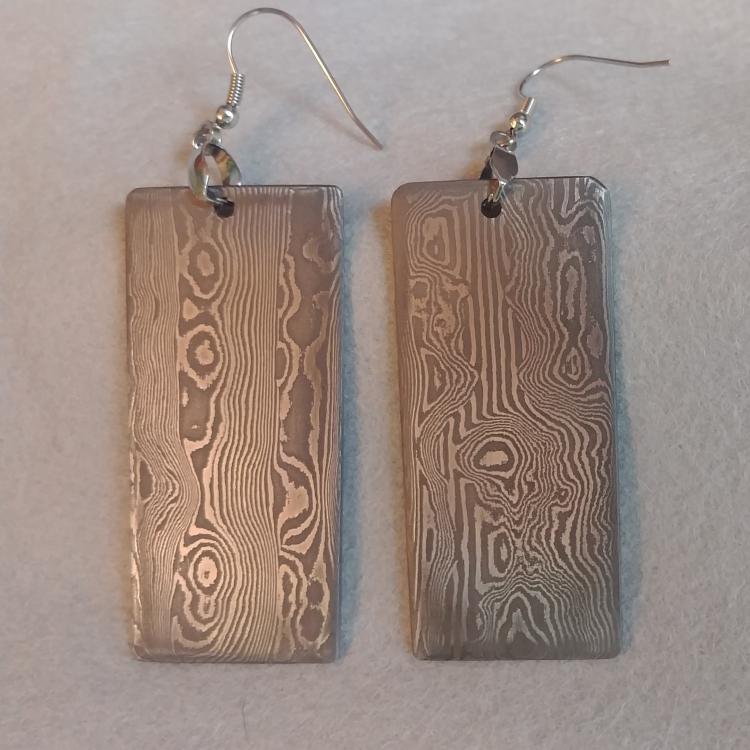
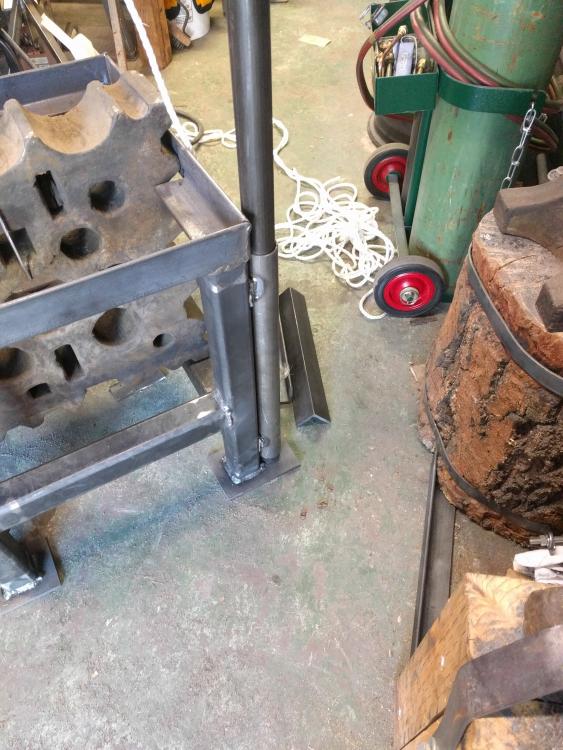
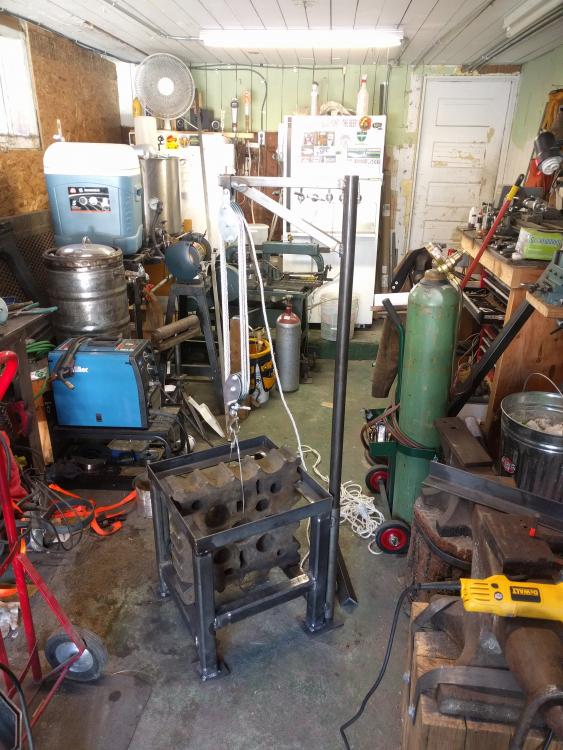
Unknown 8” Post Vise
in Vises
Posted
Did you go to that antique tractor show and swap meet today in Shelton? How was it? I thought about going just to look at that vice.